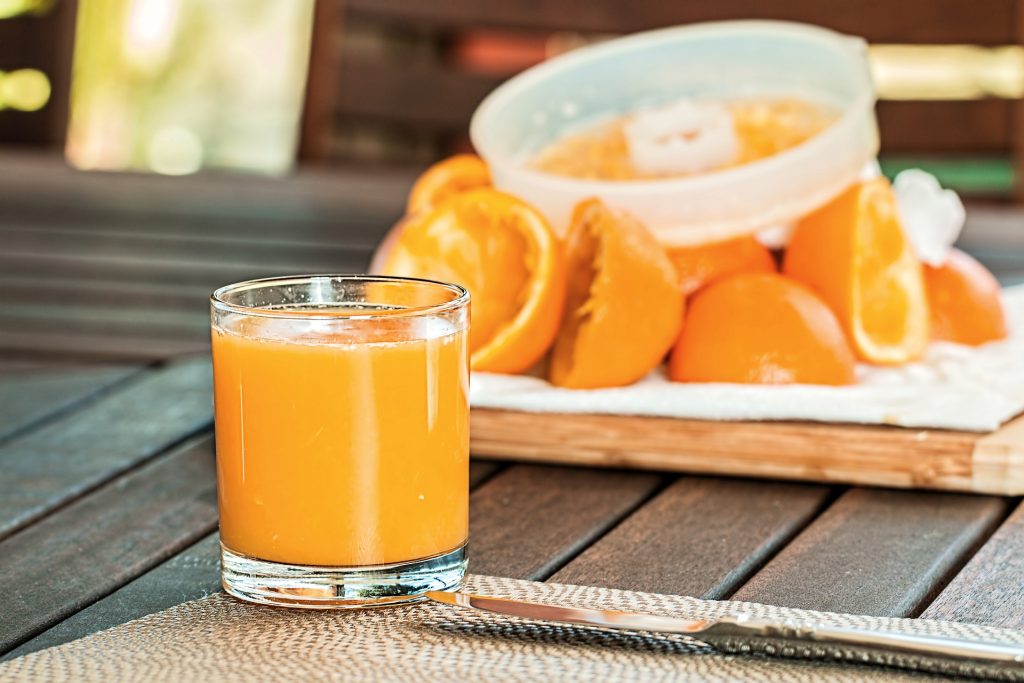 Fruit juice is increasingly being evidenced to be as detrimental to the health as soft drinks. The reason for this relates to the fact that both are concentrated sources of sugar. Sugar is detrimental to the health because it contains fructose, and fructose is a metabolic poison. Fructose enters the liver where it passes down the de novo lipogenesis pathway. Here, fatty acids are synthesised and these enter the circulation and accumulate in tissues causing insulin resistance. Insulin resistance is a condition that can lead to significant detrimental health effects including weight gain. High intakes of fructose that provide rapid and large elevations in fructose absorption increase the risk of developing insulin resistance because they maximally stimulate the de novo lipogenesis pathway. Slower more controlled absorption of fructose may much lessen these detrimental effects. Fruit is therefore much less likely to cause insulin resistance because the fibre content of the fruit significantly impedes the absorption rate of the fructose.
Fruit juice is increasingly being evidenced to be as detrimental to the health as soft drinks. The reason for this relates to the fact that both are concentrated sources of sugar. Sugar is detrimental to the health because it contains fructose, and fructose is a metabolic poison. Fructose enters the liver where it passes down the de novo lipogenesis pathway. Here, fatty acids are synthesised and these enter the circulation and accumulate in tissues causing insulin resistance. Insulin resistance is a condition that can lead to significant detrimental health effects including weight gain. High intakes of fructose that provide rapid and large elevations in fructose absorption increase the risk of developing insulin resistance because they maximally stimulate the de novo lipogenesis pathway. Slower more controlled absorption of fructose may much lessen these detrimental effects. Fruit is therefore much less likely to cause insulin resistance because the fibre content of the fruit significantly impedes the absorption rate of the fructose.

Fruit juice may have particular detrimental health effects. This relates to the fact that fructose is a metabolic poison and high intakes of fructose can lead to insulin resistance and serious metabolic changes. Fruit is not as detrimental as fruit juice because fruit contains fibre and the fibre significantly slows the absorption rate of sugars in the fruit, and this is much less damaging. Slower absorptions of sugars allows the liver a greater processing time for the sugar, which decreases the negative effects through prevention of nutrient overload syndrome. Fruit also contain less sugar that a typical serving of fruit juice. Consuming whole fruit is the best way to take advantages of the phytochemical benefits to fruit.
A number of studies have investigated the effects of fibre on the absorption of sugars from fruit juices. For example, in one study, researchers fed overweight men aged 30 to 65 year, a breakfast meal with either 240 mL of orange juice without fibre pulp, orange juice with 5.5 g orange pomace fibre, juice made from blended whole oranges or an isocaloric sugar matched control drink. The results of the study showed that orange pomace fibre significantly reduced the maximum rise in blood glucose concentrations following consumption of the breakfast meal compared to the other treatments. The maximum change in insulin concentration was also lower with the orange plus fibre drink compared to the no fibre orange juice and the control drinks. Orange pomace fibre significantly delayed peak glucose concentrations compared with the no fibre orange juice and the control drinks. These results suggest that removing the fibre from orange juice increases the absorption rate of sugars within the juice and any accompanying food.
Eat Well, Stay Healthy, Protect Yourself
RdB
